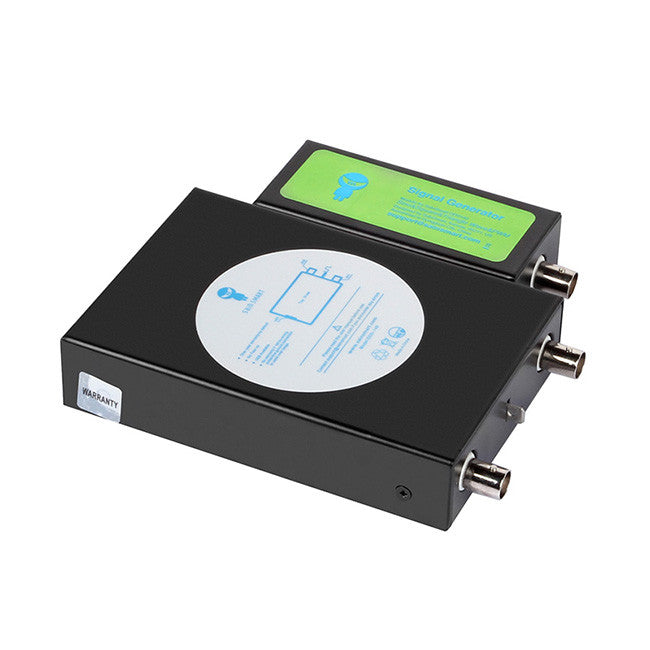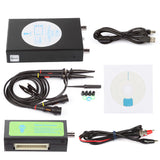

Trigger level rising / falling edge trigger The technical data read as follows: Interface Identical models are the "BM102" by Rocktech/Buudai.

The dimensions of the 4-Channel Relay module are given below.For approximately € 50 () SainSmart offers a 2-channel USB oscilloscope with 20 MHz of analogue bandwidth and maximum 50Msps (mega samples per second). Jumper might not have been moved to the correct position.
SAINSMART DDS140 SOFTWARE DOWNLOAD 6V DRIVER

Shaking the module firmly might help unstick the contacts The contacts might be welded due to overcurrent/arcing.If either of the relays does not turn on: This setup can be reversed by connecting the load to the NC terminal that keeps it powered on till the relay is activated.ĭual-Channel Relay Module Basic Troubleshooting When the relays are activated, the load is connected to the live wire and is powered. The live wire has been connected to the common terminal of each relay. In this diagram, four separate loads (represented by lightbulbs) have been connected to the NO terminals of the relay. It is useful for tasks like home automation where the module can be placed in the main switchboard and can be connected to loads in other parts of the house and can be controlled from a central location using a microcontroller. This is useful in creating a central hub from where multiple remote loads can be powered. The four-channel can be used to switch multiple loads at the same time since there are four relays on the same module. AD7528JN, a question arises at which software environment and under which conditions Raspberry Pi 2 or Pi 3 can enable it By using a simple sequence which directly sets the GPIO port state 11 to 1 in program code, and then erases it, i.e. The optocouplers used here are the PCF817, which is a common optocoupler and can also be found in through-hole packaging.

SAINSMART DDS140 SOFTWARE DOWNLOAD 6V SERIES
This is because the indicator LED and the input of the optocoupler are connected in series to the V CC pin on one end, so the other end must be connected to the ground to enable the current flow. The inputs for this module are active low, meaning that the relay is activated when the signal on the input header is low. When the jumper is shorted, the relay and the input share the same V CC, and when it is open, a separate power supply must be provided to the JD-V CC jumper to power the relay coil and optocoupler output. The driver circuit for this relay module is slightly different compared to traditional relay driving circuits since there is an optional additional layer of isolation. Internal Circuit Diagram For Four-Channel Relay ModuleĮach relay on the board has the same circuit, and the input ground is common to all four channels. The input jumper contains the main V CC, GND, and input pins for easy connection using female jumper wires. The isolation is optional and can be selected using the V CC selector jumper. The optocouplers form an additional layer of isolation between the load being switched and the inputs. The indicator LEDs glow when the coil of the respective relay is energized, indicating that the relay is active. The freewheeling diodes prevent voltage spikes across the transistors when the relay is turned off since the coils are an inductive load. They amplify the input signal so that they can drive the coils to activate the relays. The switching transistors act as a buffer between the relay coils that require high currents, and the inputs which don’t draw much current. The contacts on each relay are specified for 250VAC and 30VDC and 10A in each case, as marked on the body of the relays. The four relays on the module are rated for 5V, which means the relay is activated when there is approximately 5V across the coil. The terminals are screw type, which makes connections to mains wiring easy and changeable. There are two terminal blocks with six terminals each, and each block is shared by two relays. The four-channel relay module contains four 5V relays and the associated switching and isolating components, which makes interfacing with a microcontroller or sensor easy with minimum components and connections. Understanding 5V Four-Channel Relay Module Single-channel relay module, dual-channel relay module, eight-channel relay module. Relay maximum contact voltage – 250VAC, 30VDC.Current when the relay is active - ~70mA (single), ~300mA (all four).The four-channel relay module contains four 5V relays and the associated switching and isolating components, which makes interfacing with a microcontroller or sensor easy with minimum components and connections. The contacts on each relay are specified for 250VAC and 30VDC and 10A in each case, as marked on the body of the relays.Ĭomponents Present on A Four-Channel Relay Moduleįollowing are the major components present on the four-channel relay module, we will get into the details of this later in the article.ĥV relay, terminal blocks, male headers, transistors, optocouplers, diodes, and LEDs.


 0 kommentar(er)
0 kommentar(er)
